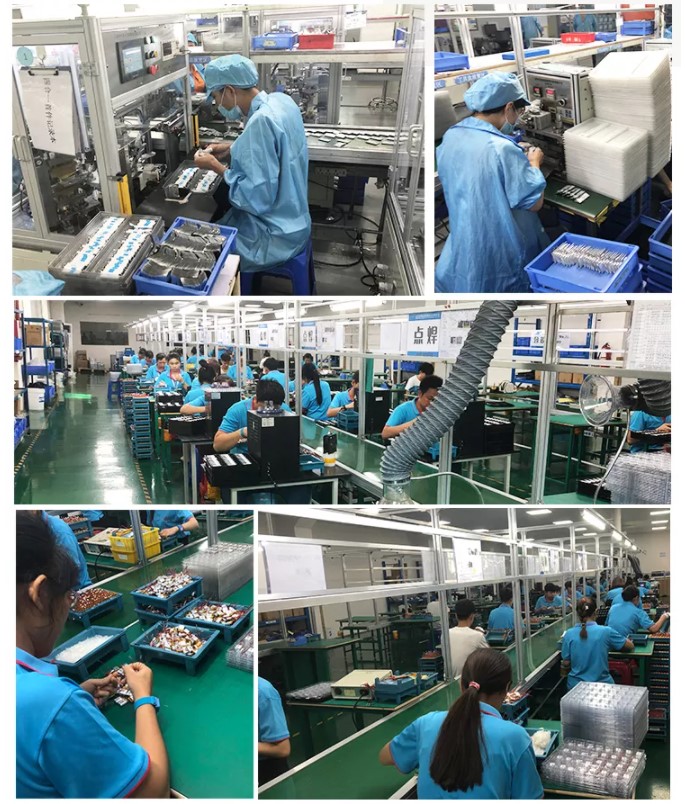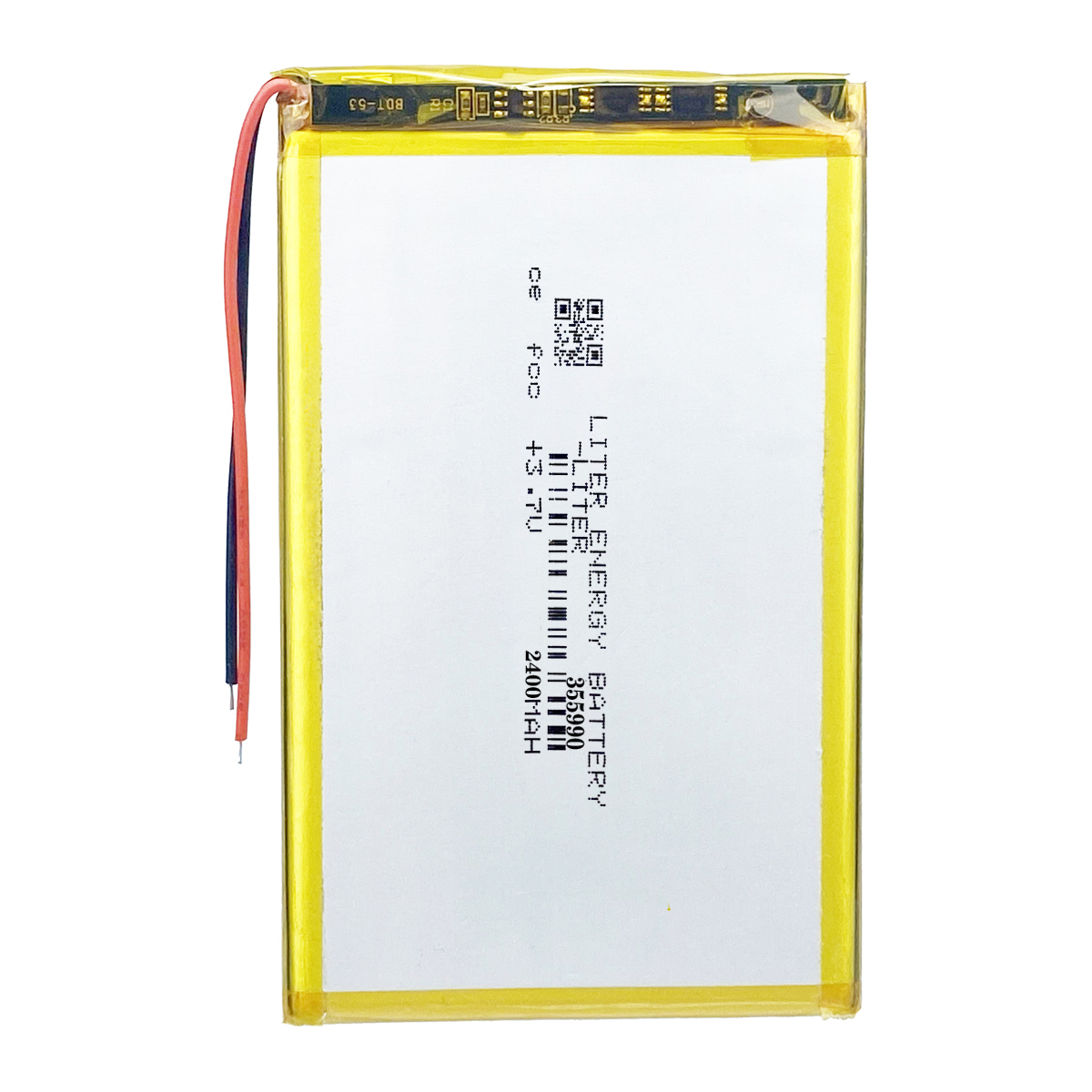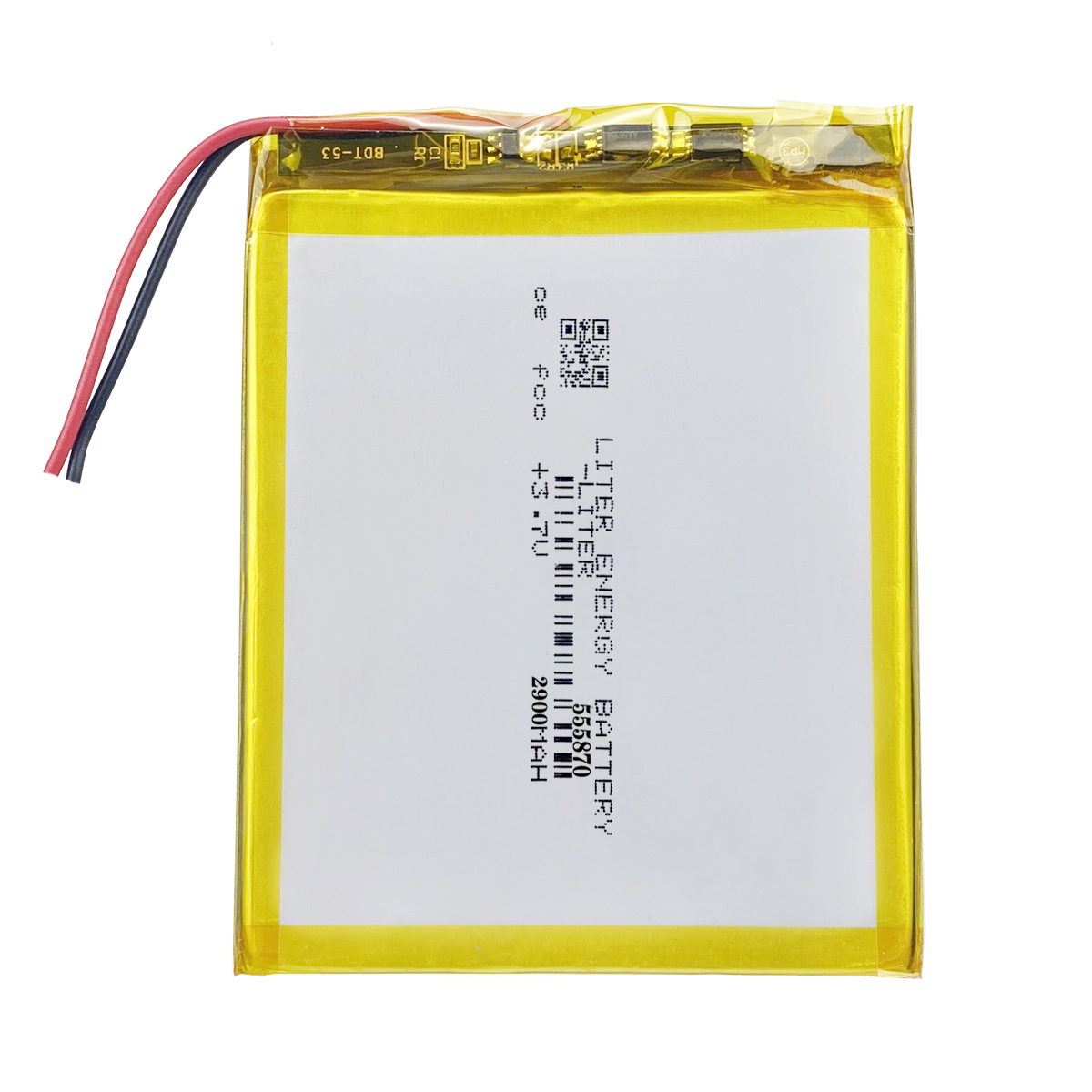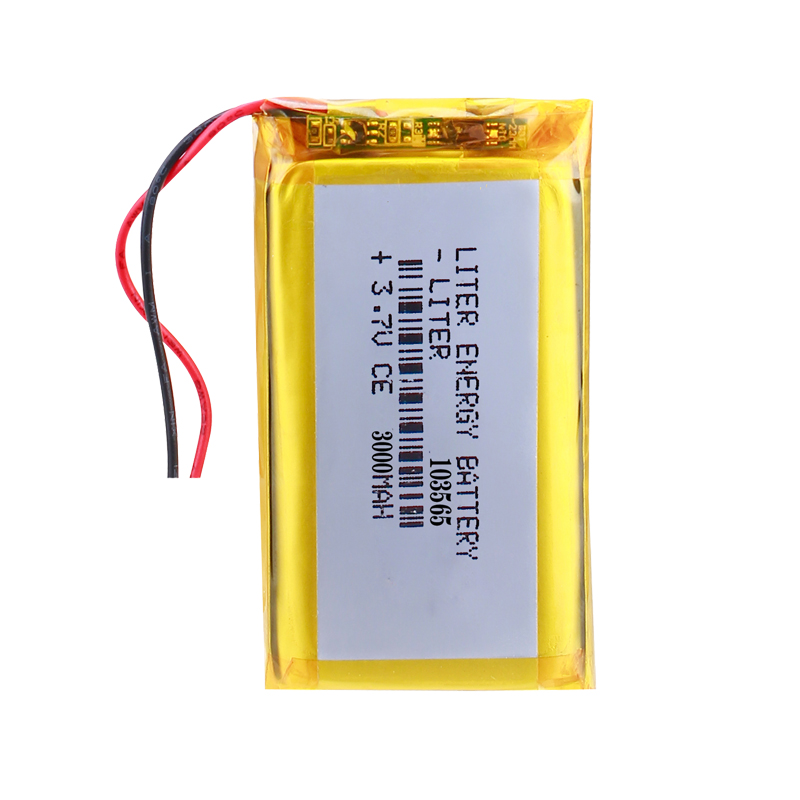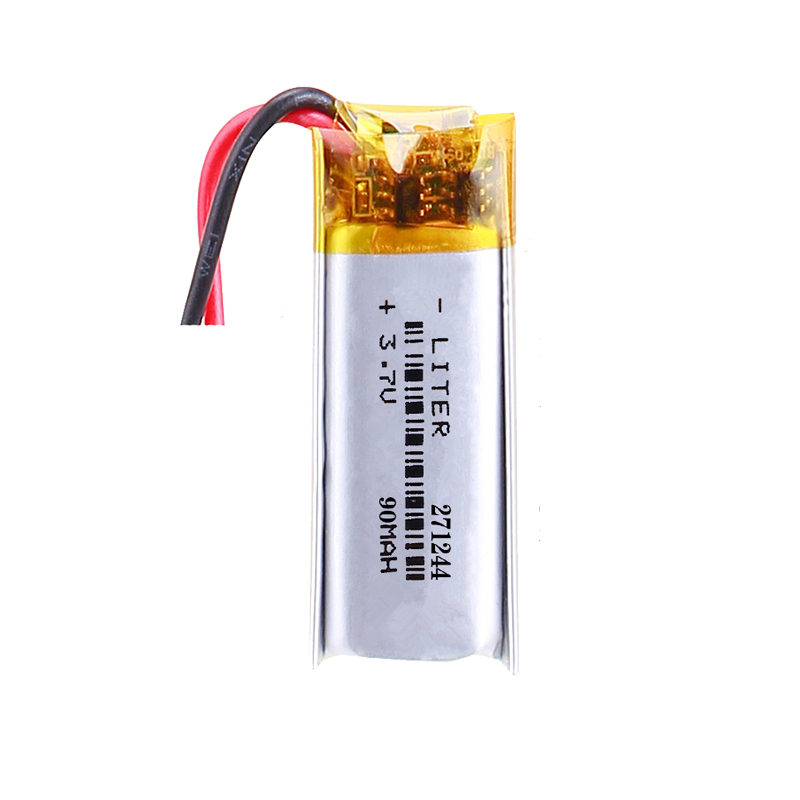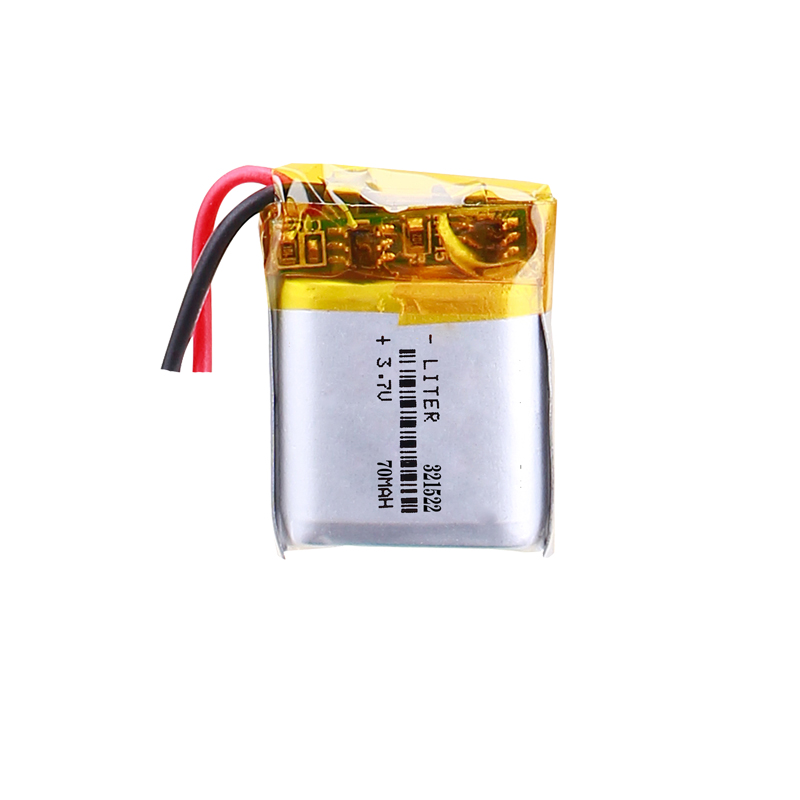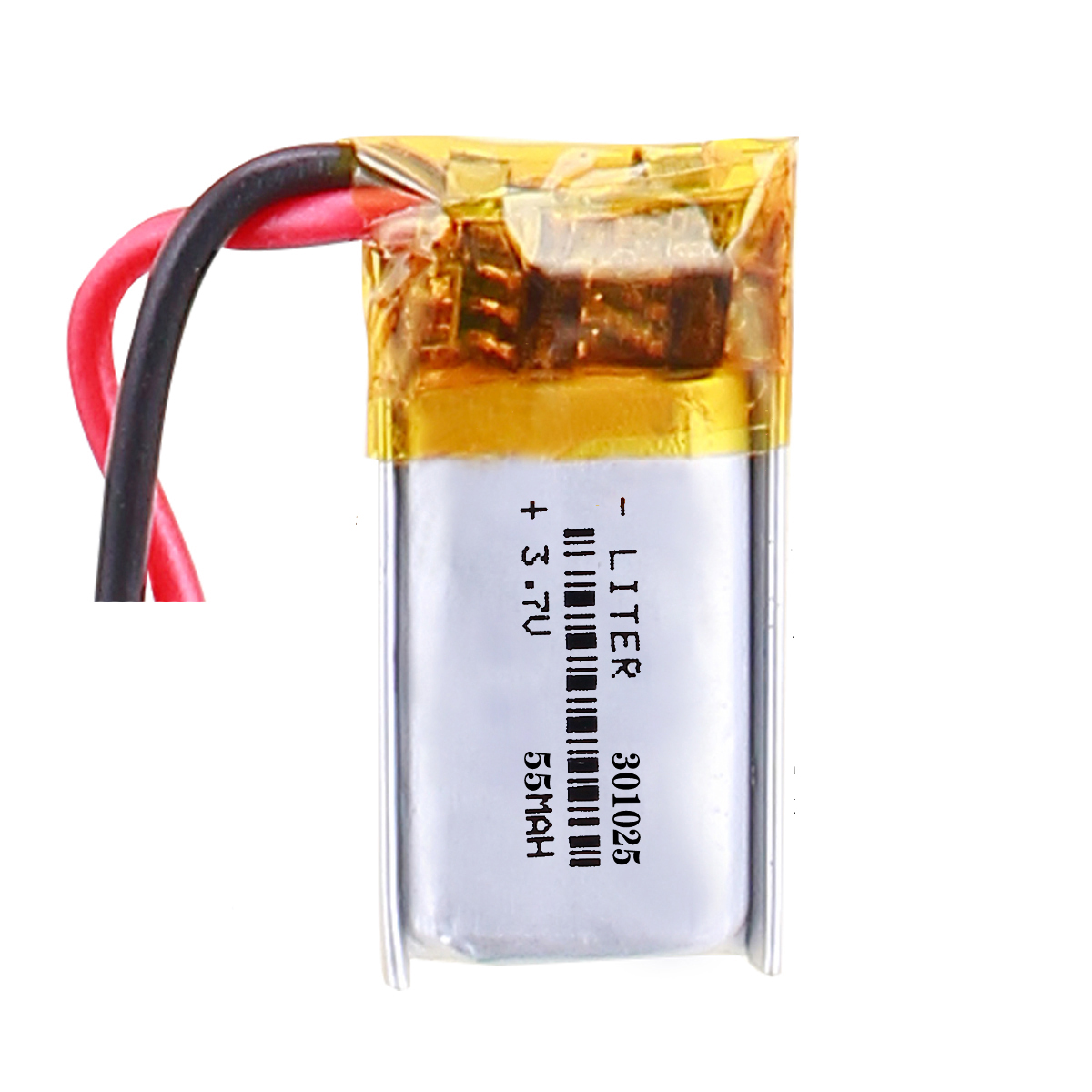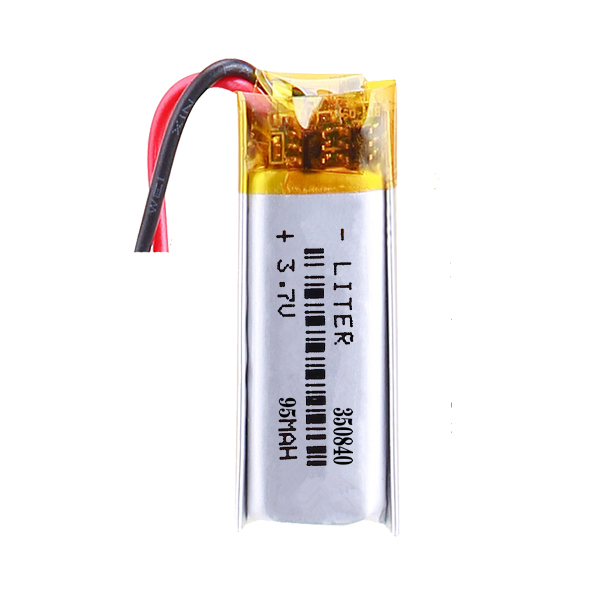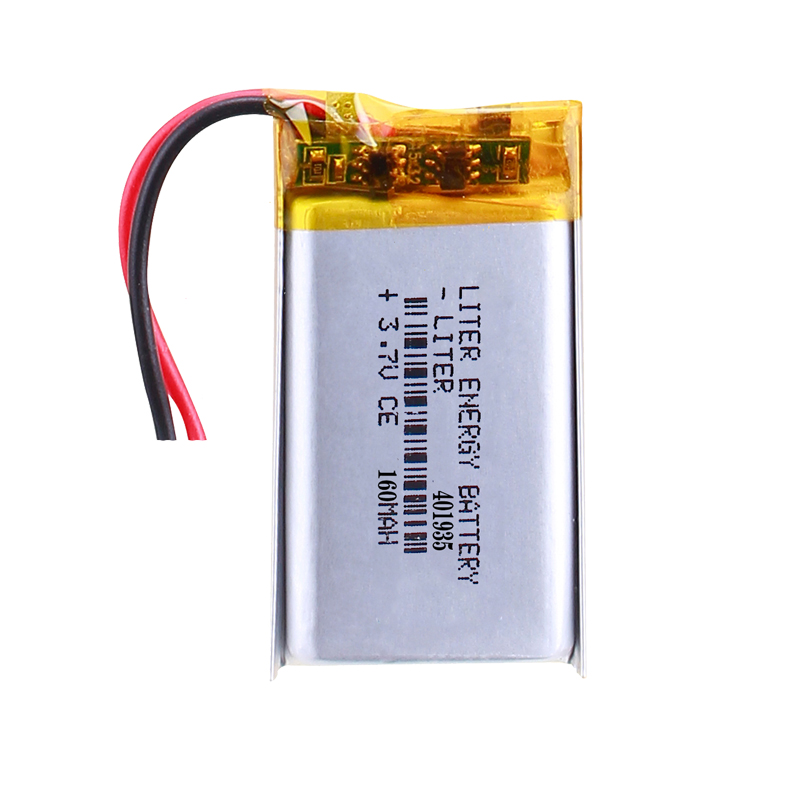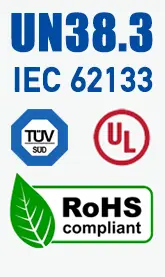Contact us
BIHUADE is a Leading 3.7V Rechargeable LiPo Batteries Manufacturer, Over 30 Years of Rechargeable LiPo Batteries Expert, Competitive Price with High Quality, Flexible Dimensions High Energy Density, Accept small sample order & custom dimensions, Leading Designer and Manufacturer from China in Lithium-Ion Polymer Battery Cell & Packs, with OEM & ODM Great Services.
Leave your requirement in the below footer box, we will reply within 12 hours.
We have thousands of models with LiPo batteries in stock, we can not put every model on our website and inventory changed every day, pls contact us before your consideration, we can offer you the recommendation.
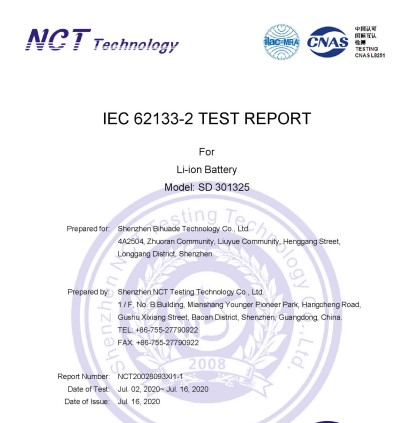
Material Safety Data Sheet
For BIHUADE BATTERY CO., LTD.
Lithium Ion Polymer Battery
Model/type reference………………..: LP452050
Trademark…………………………….: N/A
Nominal Voltage………………………: 3.7V
Typical Capacity………………………: 400mAh, 1.48Wh
Weight………………………………….: 8.0g
L: 50.0mm
Shape and Physical Dimension
(mm)…………………………………….: W: 20.0mm
T: 4.5mm
Version number………………………..: V1.0
Preparation Date………………………: May, 12, 2017~May 22, 2017
Revision date…………………………..: May 22, 2017
_____________________________________________________________________________
IDENTIFICATION OF THE SUBSTANCE/PREPARATION AND OF THE COMPANY/UNDERTAKING
Recommended use of the chemical and restrictions on use
Recommended Use: Used in portable electronic equipments;
Uses advised against:
a)Do not dismantle, open or shred secondary cells or batteries.
b)Do not expose cells or batteries to heat or fire. Avoid storage in direct sunlight.
c)Do not short-circuit a cell or a battery. Do not store cells or batteries haphazardly in a box or drawer where they may short-circuit each other or be shore-circuited by other metal objects.
d)Do not remove a cell or battery from its original packaging until required for use.
e)Do not subject cells or batteries to mechanical shock.
f)In the event of a cdll leaking, do not allow the liquid to come in contact with the skin or eyes. If contact has been made, wash the affected area with copious amounts of water and seek medical advice.
g)Do not use any charge other than that specifically provided for use with the equipment.
h)Observe the plus(+) and minus(-)marks on the cell, battery and equipment and ensure correct use.
i)Do not use any cell or battery which is not designed for use with equipment.
j)Do not mix cells of different manufacture, capacity, size or type within a device.
k)Battery usage by children should be supervised.
I)Seek medical advice immediately if a cell or a battery has been swallowed.
m)Always purchase the battery recommend by the device manufacturer for the equipment.
n)Keep cells and batteries clean and dry.
o)Wipe the cell or battery terminals with a clean dry cloth if they become dirty.
p)Secondary cells and batteries need to be charged before use. Always use the correct charger and refer to the manufacturer’s instructions or equipment manual for proper charging instructions.
q)Do not leave a battery on prolonged charge when not in use.
r)After extended periods of storage, it may be necessary to charge the discharge the cells or batteries several times to obtain maximum performance.
s)Retain the original product literature for future reference.
t)Use only the cell or battery in the application for which it was intended.
u)When possible, remove the battery from the equipment when not in use.
v)Dispose of properly.
2. HAZARDS IDENTIFICATION
Classification
No harm at the normal use. If contact the Electrolyte liquid in the Li-ion Battery, reference as follows:
Classification of the substance or mixture
Classification according to GHS
Acute Toxicity, Oral(Hazard category 4)
Acute Toxicity, Dermal(Hazard category 3)
Skin, irritate(Cagegory 1B)<
Certificated IEC62133 of LiPo Battery – Liter energy battery Battery Co., Ltd
From 1st May 2012, the LiPo cells and LiPo Batteries must be fully tested to IEC 62133 for CB certification.
About the IEC62133 Standard
IEC62133 is the most important standard for exporting LiPo Batteries, including those used in IT Equipment, tools, laboratory, household, and medical equipment.
In December 2012, the International Electrotechnical Commission (IEC) officially released the IEC62133 second edition IEC62133:2012 (2nd Edition), an international safety standard for LiPo battery products. This standard is mainly for the safety requirements of single LiPo cell batteries and LiPo battery packs and portable sealed single cell batteries and LiPo battery packs containing alkaline or non-acid electrolytes (including LiPo Batteries which is lithium polymer batteries, lithium ion(Li-Ion) cells, nickel-hydrogen batteries, nickel-cadmium batteries, etc.).
The second edition will have some very significant changes related to LiPo Batteries.
Part I: Cells
The second edition of IEC62133 have the most impact on lithium ion cell manufacturers and dealers, it also important for company who use the lithium ion cell. The changes related to LiPo cells fall into three categories:
• Cancel redundant tests with other standards
• Modify existing tests
• Completely new requirements
1.Cancel redundant tests with other standards
The main focus is to delete the items covered by the United Nations Manual Of Tests and Criteria(UN38.3). The tests deleted are:
Vibration
Mechanical Shock
Low Pressure(Altitude Simulation)
Cell Protection Against High Rate Charging(not a UN38.3 test)
2.Modify existing tests
The most important of these changes is related to how the sample is prepared for testing. In the first edition of the standard, samples were charged at room temperature (20°C ±5°C) according to the manufacturer’s recommended charging method. The second edition includes two charging processes: one at room temperature, and one new program at high and low specified operating temperature ranges (10°C and 45°C if not stated). The new charging method also requires charging at the maximum rated charge current of the product. This process only requires samples at the cell level for short circuits, thermal abuse, crushing, and forced internal short tests.
In the constant voltage test, a continuous low-rate charge test was corrected to a constant charge. This modified test requires the LiPo battery to be charged for 7 days at the manufacturer’s recommended charge current and voltage limits.
Modifications to the crush test included clarification of the test, indicating that the crushing only needs to be done along the broadside of the cell. In addition, termination criteria for 10% deformation of cells were also added.
A more important change is to divide the short circuit into separate parts of the LiPo batteries. The second version of the cell was modified to contain only one test temperature and provide a more stringent range of circuit resistances.
3.Completely new requirements
The most significant change in the second edition is the addition of a new test——Forced Internal Short Circuit test. The test procedure very explicitly describes a method that requires the test facility to fully charge a Li-Ion cell, then open it and remove the jellyroll. Once the cell is removed from the can, a small Nickel particle of a specific shape and size is to be place in a very specific location of the cell jellyroll. Following the placement of the particle, the affected jellyroll is to be crushed.
Pate II: Batteries
For LiPo battery manufacturers, the IEC62133 edition2 proposal will have less impact on LiPo batteries manufacturers than LiPo battery suppliers. LiPo Batteries manufacturers’ testing and demand will actually be reduced. The changes related to LiPo batteries fall into three categories:
• Revised Charging Procedure
• Reduced Sample Requirement
• New testing
1.Revised Charging Procedure
Similar to the cell level charging process changes, the LiPo battery level will have a modified charging process, but this will only affect the battery level of a test. This change comes from Japan’s lithium-ion battery and battery test requirements, and it state that samples used for short-circuit testing must be charged in an environment which is equal to the ambient temperature upper and lower: assumes 45°C and 10°C if not provided by the manufacturer. All other tested units on the LiPo battery level were charged at room temperature (20°C).
2. Reduced Sample Requirement
The subcommittee’s test requirements for LiPo batteries are more comprehensive than ever. Therefore, the amount of test required by IEC 62133 at the LiPo battery level has dropped significantly. The testing that has been completely removed as a result of this review is:
• Vibration
• Temperature Cycling
• Mechanical Shock
The result is that the change reduces the required number of samples for testing from 31 for First Edition testing to 21 for Second Edition testing.
3.New Test
A new test has also been added to the LiPo battery level, designed to simulate the LiPo battery charging time longer than the manufacturer’s use of a higher charging rate. This test is performed on a fully discharged five LiPo battery packs, and the charge the batteries with a current of two times the rated current, and an upper voltage limit that is set to the maximum voltage available from the charger to the LiPo battery. If you do not know the charger’s maximum voltage, 5 volt per cell (or cell string) will be used. The current is maintained until the maximum charge voltage is reached and the temperature is monitored during the test. The termination of the test is defined as the temperature is stable, the highest voltage is reached, with acceptance criteria of no fire and no explosion.
LP403035 420mAh IEC62133 Test report
General product information
This LiPo battery is constructed with one pouch cell, and has over-discharge, over current and short-circuits proof circuits.
The main features of the cell in the LiPo battery pack as shown as below:
Model | Nominal capacity | Nominal Voltage | Nominal Charge Current | |
LP403035 | 420mAh | 3.7V | 210mA |
Nominal Discharge Current | Maximum Charge Current | Maximum Discharge Current | Maximum Charge Voltage | Cut-off Voltage |
210mA | 420mA | 420mA | 4.25V | 3V |
Tests Performed(name of test and test clause):
Tests are made with number of samples specified in Table 2 of IEC62133:2012(2nd Edition).
Test items:
Type test conditions
Charging procedures for test purpose
Continuous charging at constant voltage(cells)
Moulded case stress at high ambient temperature(LiPo battery)
External short circuit(cell)
External short circuit(LiPo battery)
Free fall
Thermal abuse(cells)
Crush(cells)
Over-charging of LiPo LiPo battery
Forced discharge(cells)
Transport tests
Test conclusion:
LiPo Battery submitted by Liter energy battery Battery Co.,Ltd are tested according to IEC62133: 2012(2nd Edition) Secondary cells and batteries containing alkaline or other non-acid electrolytes Safety requirements for portable sealed seconds cells. and for batteries made from them, for use in portable applications.
Test result: Pass.
IEC62133: 2012(2nd Edition) | ||
Clause | Requirement – Test | Verdict |
4 | Parameter measurement tolerances | P |
5 | General safety considerations | P |
Cells and batteries subject to intended use be safe and continue to function in all respects | P | |
Cells and batteries subject to reasonably foreseeable misuse do not present significant hazards | P | |
5.2 | Insulation and wiring | P |
Internal wiring and insulation are sufficient to withstand maximum anticipated current, voltage and temperature requirements | P | |
Orientation of wiring maintains adequate creep age and clearance distances between conductors. Mechanical integrity of internal connections is sufficient to accommodate conditions of reasonably foreseeable misuse. | P | |
5.3 | Venting | P |
Battery cases and cells incorporate a pressure relief mechanism or are constructed so that they relieve excessive internal pressure at a value and rate that will preclude rupture, explosion and self-ignition. | P | |
Encapsulation used to support cells within an outer casing does not cause the battery to overheat during normal operation no inhibit pressure relief. | P | |
5.4 | Temperature/voltage/current management | P |
The batteries are designed such that abnormal temperature rise conditions are prevented. | P | |
Means is provided to limit current to safe levels during charge and discharge. | P | |
The batteries are designed such that within temperature, voltage and current limits specified by the cell manufacturer. | P | |
Batteries are provided with specifications and charging instructions for equipment manufacturers so that associated chargers are designed to maintain charging within the temperature, voltage and current limits specified. | P | |
5.5 | Terminal contacts | P |
Terminals have a clear polarity marking on the external surface of the battery | P | |
The size and shape of the terminal contacts ensure that they can carry the maximum anticipated current. | P | |
External terminal contacts surfaces are formed from conductive materials with good mechanical strength and corrosion resistance. | P | |
Terminal contacts are arranged to minimize the risk of short circuits. | P | |
5.61 | Protective circuit components are added as appropriate and consideration given to the end-device application | P |
5.6.2 | Design recommendation for lithium system only | P |
For the battery consisting of a single cell or a single cellblock: -charging voltage of the cell does not exceed the upper limit of the charging voltage specified in Clause 8.1.2, Table 4: or | P | |
-Charging voltage of the cell does not exceed the different upper limit of the charging voltage determined through Clause 8.1.2, NOTE1. | P | |
5.7 | Quality plan | P |
The manufacture has prepared a quality plan defining the procedures for the inspection of materials , components, cells and batteries and which covers the process of producing each type of cell and battery. | P | |
6 | Type test conditions | P |
Tests were conducted with the number of cells or batteries as outlined in Table 2 of IEC62133 with cells or batteries that were not more than six months old. | P | |
Unless noted otherwise in the test methods, thieving was conducted in an ambient of 20°C±5°C. | P | |
8 | Specific requirements and tests | P |
8.1 | Charging procedure for test purposes | P |
If a cell’s specified upper and/or lower charging temperature exceeds values for the upper and/or lower limit test temperatures of Table 4, the cells were charged at the specified values plus 5°C for the upper limit and minus 5°C for the lower limit. | P | |
A valid rationale was provided to ensure the safety of the cell(see Figure A.1) | P | |
8.2 | Intended use | P |
8.2.1 | Continuous charging at constant voltage(cells) | P |
Fully charged cells are subjected for 7 days to a charge as specified by the manufacturer. | P | |
Results: No fire, no explosion, no leakage | P | |
8.2.2 | Moulded case stress at high ambient temperature(battery) | P |
Fully charged batteries according to the first procedure in 8.1.1, the batteries were placed in an air-circulating oven at a temperature of 75°C±2°C for 7 hours. Afterwards, they are removed and allowed to return to room temperature. | P | |
8.3 | Reasonably foreseeable misuse | P |
External short circuit(cell) | P | |
The case temperature declined by 20% of the maximum temperature rise | P | |
8.3.2 | External short circuit(battery) | P |
The batteries were tested until not of the following occurred: -24 hours elapsed | P | |
8.3.3 | Free fall | P |
Ambient temperature of 20°C±5°C. | P | |
Fully charged cells or batteries were dropped 3 times from a height of 1.0m onto a concrete floor. | P | |
After the test, the cell or battery shall be put on rest for a minimum of one hour and then a visual inspection shall be performed. | P | |
Results: No fire, no explosion | P | |
8.3.4 | Thermal abuse(cells) | P |
The cells were held at 130°C±2°C for: -10 minutes Results: No fire. No explosion | P | |
8.3.5 | Crush(cells) | P |
Each fully charged cell, charged according to the second procedure at the upper limit charging temperature in 8.1.2, is immediately transferred and crushed between two flat surfaces in an ambient temperature. | P | |
The crushing force was released upon: -The maximum force of 13 kN ±1 kN has been applied. Results: No fire. No explosion | P | |
8.3.6 | Over-charging of battery | P |
Test was continued until the temperature of the outer casing: -Reached steady state conditions(less than10°C charge in 30 minute period); or -Returned to ambient Results: No fire. No explosion | P | |
8.3.8 | Transport test | P |
Regulations concerning international transport of LiPo batteries are based on the UN Recommendations on the Transport of Dangerous Goods. Testing requirements are defined in the UN Manual of Tests & Criteria. Testing laboratory | P | |
9 | Information for safety | P |
The manufacturer of secondary cells ensures that information is provided about current, voltage and temperature limits of their products. | P | |
The manufacturer of batteries ensures that equipment manufacturers and, in the case of direct sales, end-users are provided with information to minimize and mitigate hazards. | P | |
10.2 | Battery marking | P |
Batteries marked in accordance with the requirements for the cells from which they are assembled. | P | |
Batteries marked with an appropriate caution statement. | P | |
11 | Packaging | P |
Cells or batteries were provided with packaging that was adequate to avoid mechanical damage during transport, handing and stacking. The materials and pack design was chosen to prevent the development of unintentional conduction, corrosion of the terminal and ingress of moisture. | P | |
Certificated IEC62133-2017 LiPo Batteries
3.7V Rechargeable LiPo Batteries Manufacturer Supplier, IEC62133 certificated lithium polymer batteries for your new device, Liter energy battery Custom-shaped batteries are designed to fit into any and all spaces in a product. In order to provide the best efficiency, LiPo batteries can be made to fit into even unused spaces. We provide Custom LiPo Batteries, semi-custom LiPo Batteries, and off-the-shelf LiPo Batteries. With our proprietary formula and high discharge-rate technology, you can maximize the run time and use of your product. we are the industry-leading manufacturer of shaped LiPo batteries.
We design and manufacture custom Lithium Polymer Batteries’ packs to customers’ specifications. If you need a specific Lithium Polymer Batteries pack, we can advise the best possible solution, Customized Your Lithium Polymer Battery in Any Size, Capacity, and Shape, Meet Your Different Needs by Assembling the Lithium Polymer Battery in Series and Parallel.
355990 2400mAh Standard LiPo Battery with connector JST PHR-2 A
Model 355990 2400mAh Standard LiPo Battery with connector JST PHR-2 AType3.7V Standard LiPo Battery...
555870 2900mAh Standard LiPo Battery with connector FPCB
Model 555870 2900mAh Standard LiPo Battery with connector FPCBType3.7V Standard LiPo BatteryCapacit...
3.7V 103565 3000mAh Standard LiPo Battery with connector two pairs wires two connectors
Model3.7V 103565 3000mAh Standard LiPo Battery with connector two pairs wires two connectorsType3....
271244 90mAh 3.7V Rechargeable LiPo Battery Batteries
271244 90mAh 3.7V Rechargeable LiPo Battery BatteriesBattery Type 271244 90mAh 3.7V Rechargeable ...
321522 70mAh 3.7V Rechargeable LiPo Battery Batteries
321522 70mAh 3.7V Rechargeable LiPo Battery BatteriesBattery Type 321522 70mAh 3.7V Rechargeable ...
301025 55mAh 3.7V Rechargeable LiPo Battery Batteries
Model 301025 55mAh 3.7V Rechargeable LiPo Battery BatteriesType3.7V LiPo batteryCapacity55mAh LiPo ...
350840 95mAh 3.7V Rechargeable LiPo Battery Batteries with connector JST ACHR-03V-S B
Model 350840 95mAh 3.7V Rechargeable LiPo Battery Batteries with connector JST ACHR-03V-S BType3.7V...
401935 1.5A 160mAh 3.7V Rechargeable LiPo Battery Batteries
Model 4019035 1.5A 160mAh 3.7V Rechargeable LiPo Battery BatteriesType3.7V LiPo Battery Batteries...
